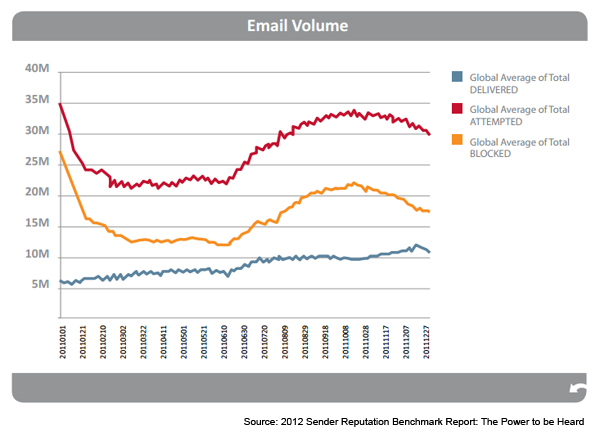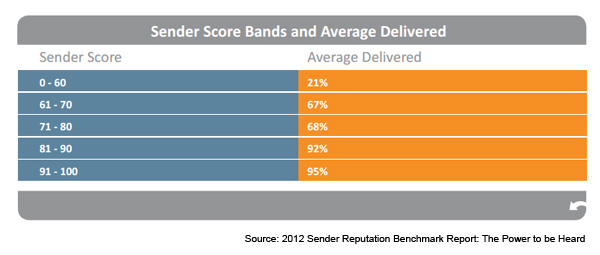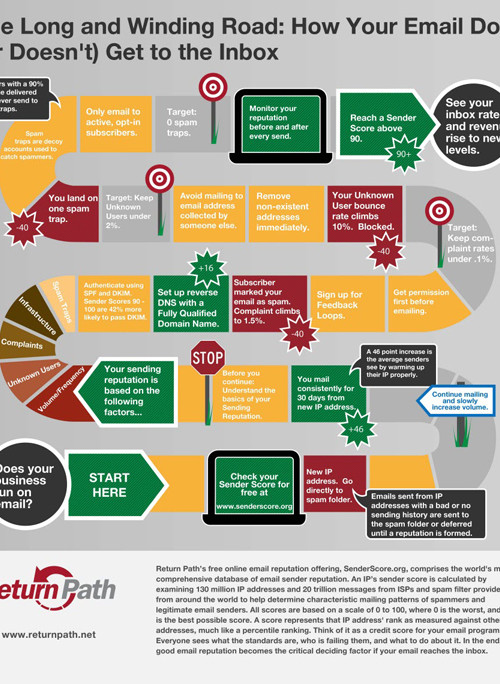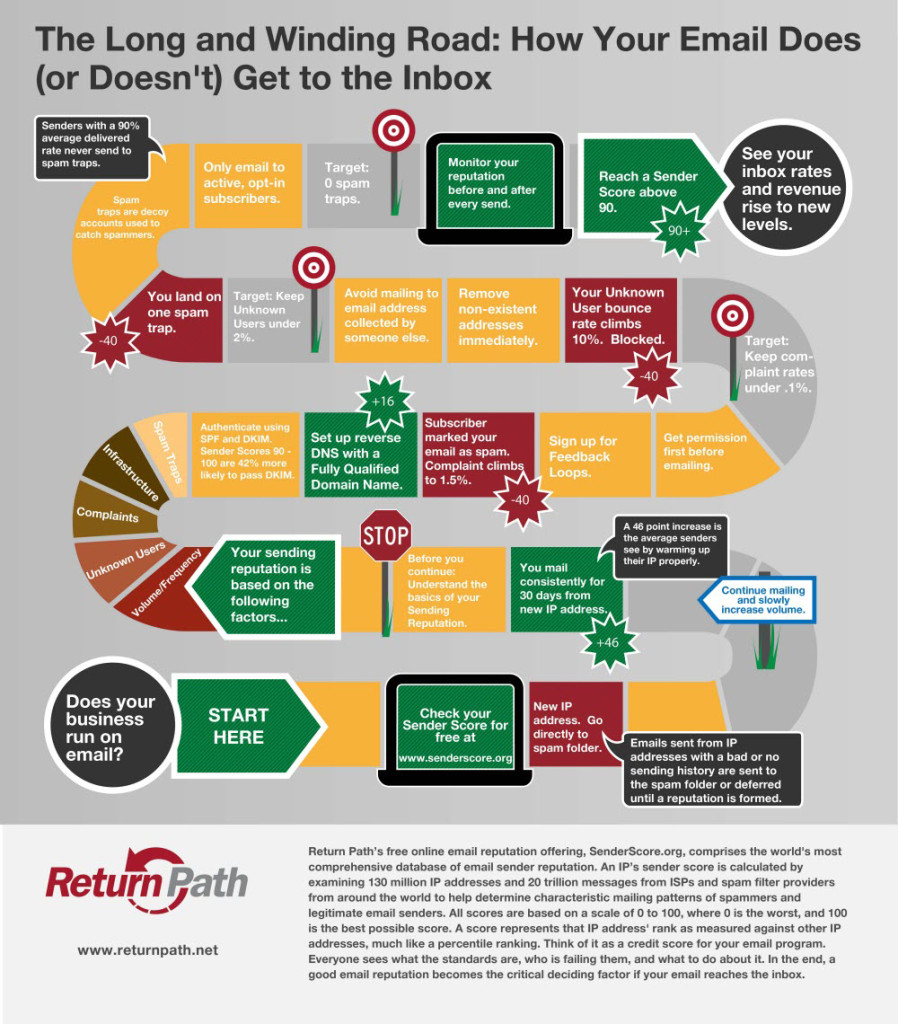As spam emails increase, ISPs enforce tougher standards on email senders, making the email marketers job that much harder.
When you send an email marketing campaign to your list, you are probably used to seeing open rates, bounce rates, click through rates, and the number of email delivered. However what you may not know is that despite saying delivered, approximately 20% of these emails never reach the inbox, they either go to the ‘Spam’ folders or are blocked by the ISP (Internet Service Provider).
Increased Spam
These tougher standards come as a result of increased ‘spam’ emails. After a sharp drop in spam at the beginning of 2011, it rapidly increased again from July and continued to increase throughout the rest of the year.

Sender Reputation
ISP’s use sender reputation to asses you as an email sender, Return Path’s Sender Score is the most accurate tool we have to predict how good or poor our sender reputation is.
Return Path’s latest study, 2012 Sender Reputation Benchmark Report: The Power to be Heard, tracked the reputation rates of more than 130 million IP addresses and nearly 20 trillion messages from January to December 2011 using Sender Score, an index of an email sender’s reputation and a measure of the same metrics that ISPs’ use when making deliverability decisions. 85% of these messages were classified as spam, posing an on-going challenge for ISPs. Businesses with high sender reputations or Sender Scores above 90 saw 95% of their messages delivered on average, whereas those with lower sender reputations, Sender Scores between 60 and 89—the majority of businesses, saw delivery rates of only 68% on average.
What factors give you a poor sender reputation
Return Path studied senders’ reputations across the globe and industry sectors examining the major factors affecting inbox deliverability including:
- Unknown user rates or those email addresses no longer in active use
- Compliant rates, when email recipients mark a message as spam
- Spam traps set by ISPs to deliberately catch spammers
Across the various sectors the report looked at, social networks, gaming, banks and retailers needed to be most vigilant about their sender reputation. One way social networks grow their subscriber base is by sending invites to your contact list, but as we don’t maintain our personal contact lists, they are usually full of out of date and old email addresses, one of the cause of them having higher spam rates than most.
What should email marketers do
The first step is to identify your sender score, head over to the sender score website, you will need your IP address for your mail server, if you are unsure ask your ESP (Email Service Provider). Between 90-100 is where you want to be, anything less than 60, and you really need to work on it.

If you do have a low score, than you need to:
Reduce the number of spam complaints –
- Try to avoid buying email marketing lists
- Encourage the user to unsubscribe rather than hit the spam button, and also have a feedback option to identify why they are unsubsrcibing
- Send out what you promised upon them subscribing
Maintain a good list hygiene –
- Identify emails that are no longer active
- Ask your subscribers to update their details
- Use double opt-in
Keep motoring your sender score and keep it up at 90.
Return Path have put together a cool inforgraphic here which shows how an email travels (or doesn’t) to the inbox:







